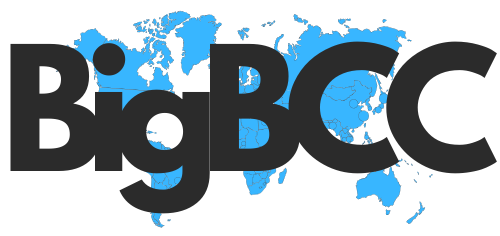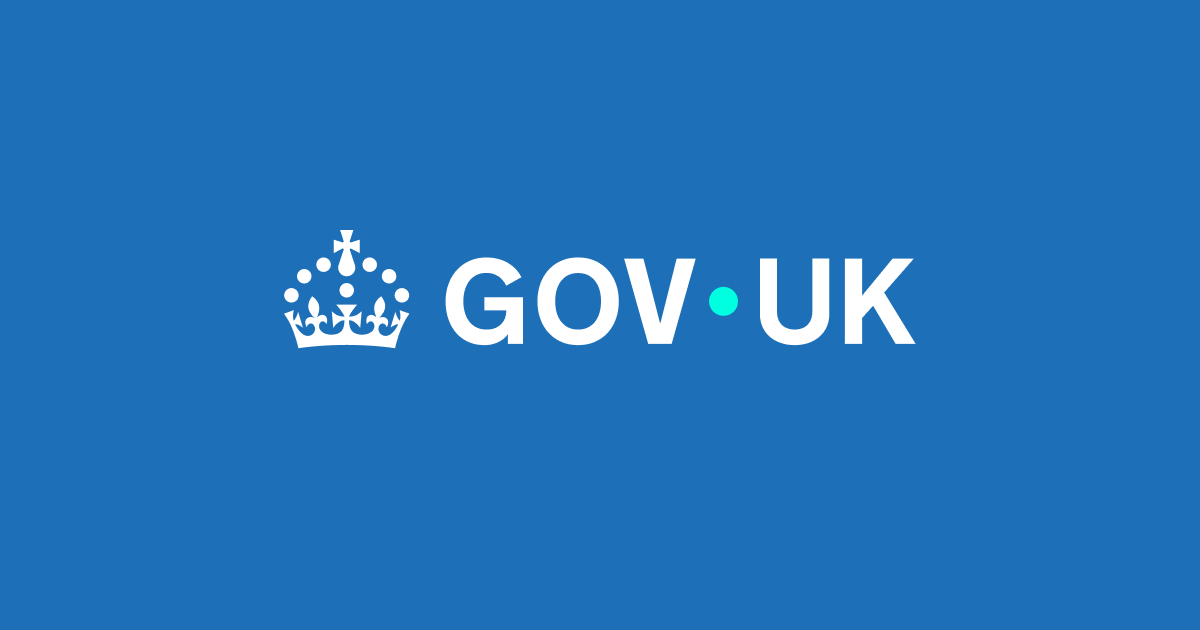PASTORAL…WITH PLENTY TO DO
That’s not to say business school is all work. In rural programs, you might expect MBAs to be hunkered down like hermits to master the minutiae and score the highest grades. Just picture Hanover, New Hampshire, home to Dartmouth College’s Tuck School. Two hours from Boston, Hanover is nestled in the wooded hills of the Upper Valley – population 8,520 with temperatures averaging 10 degrees on January nights. Not surprisingly, Jordan Swett heard prospective students ask if there was anything to do in Hanover and would they be “stuck in the middle of the nowhere.” For Swett, a ’25 graduate who now works at a San Francisco venture capital firm, the reality was that there may have been too much to do in Hanover.
“I’ve experienced an incredible opportunity to explore the natural beauty of New England. Whether it’s skiing at nearby Killington, visiting a local working farm, or taking a weekend trip to Burlington or Montreal, I’ve found myself constantly choosing between amazing options rather than feeling limited. I’ve actually struggled to see and do everything I wanted during my precious two years in one of the most beautiful, adventure-filled regions in the country.”
You’ll hear plenty of opinions about your favorite business schools that are half-truths, distortions, and simply out-of-date. That’s one reason why Poets&Quants surveyed its Best & Brightest MBAs and MBAs To Watch to learn the myths and misconceptions about their alma maters – and how their experiences differed from the so-called conventional wisdom. From Babson College to the Yale School of Management, here is what MBA graduates really saw during their time in business school.
Myth: Babson is that it’s only for founders – if you don’t want to start a business, it’s not the right place for you.
Reality: “Before coming here, I heard this many times, and I even questioned whether my corporate background in FP&A would fit in.
But once I arrived, I quickly realized that Babson is not just about starting businesses – it’s about thinking entrepreneurially in any career path – it’s about entrepreneurial mindset. Whether you want to be a founder, a corporate leader, a consultant, or an investor, Babson teaches you how to identify opportunities, solve problems, and take action in uncertainty – skills that are invaluable in any industry.
I have seen classmates go into finance, consulting, tech, social impact, and corporate leadership – all while applying the same entrepreneurial mindset. For me, Babson provided the perfect environment to blend my finance expertise with innovation, helping me build not only a startup but also a strategic approach to acquiring and scaling businesses.
So, while Babson is undoubtedly a top-tier school for entrepreneurship, the real truth is: it’s a school for action-driven leaders in any field.”
Ruso Samunashvili, Babson College (Olin)
Myth: A myth about New England universities, including Boston College, is that all students come from wealthy families and are imbued with entitlement.
Reality: “Within my MBA program, by and large, my classmates are working professionals who are years to decades removed from dependency on their families. They were humble professionals seeking to pivot career paths or boost current career trajectories prioritize relationship building over the self-aggrandizing that entitlement espouses.”
Carolyn Ballinger, Boston College (Carroll)
Myth: “BYU Marriott is a religious-based education that sometimes lacks diverse perspectives.
Reality: “My experience has been the opposite. BYU Marriott encourages open, thoughtful discussions that connect business with ethics, values, and real-world challenges. Instead of limiting perspectives, the faith-based environment adds depth to conversations about leadership, integrity, and purpose. The program also attracts students from different backgrounds and industries, creating a space where diverse ideas are respected and explored. Rather than holding me back, this environment has strengthened my understanding of business—reminding me that success is about people, values, and long-term impact.”
Camila Costa, Brigham Young University (Marriott)
Myth: Carnegie Mellon University and the Tepper School are ‘quant jocks’ and engineers.
Reality: “While the Tepper School does emphasize analytics and data-driven decision-making, I found that it’s just as much about the human side of business—fostering leadership, collaboration, and diversity. The environment provides a unique balance of rigorous quantitative coursework and classes that emphasize people, leadership, and communication—all of which are just as critical in shaping well-rounded business leaders. The Tepper School isn’t just about numbers; it’s about personal growth, community impact, and the ability to translate insights into action—using data not just to analyze, but to drive better decisions and lead effectively.”
Vinicius Santos Avelar, Carnegie Mellon University (Tepper)
Myth: I often hear Booth described as a “finance school” or a “quant school.”
Reality: “It’s not a myth that Booth’s finance curriculum is phenomenal, but I see the school as so much more than that. As someone who came from a finance background and was looking to branch out academically, I found lots of value in the soft skills classes here. Negotiations provided me with frameworks and approaches that I employ in my personal interactions as much as my professional ones. Interpersonal Dynamics provided me with brutally honest, high-quality feedback on my leadership style that I couldn’t have gotten anywhere else. As a LEAD facilitator, I became part of a community of engaged, inspiring leaders and received 1×1 coaching and support on my leadership journey. My point here is just that Booth can be an enriching home for anyone, whether quantitatively inclined or not.”
Yana Kaplun, University of Chicago (Booth)
Myth: The environment would be excessively competitive in a negative way, especially considering we are based in New York City, notorious for this type of environment.
Reality: “I was pleasantly surprised to find that my classmates were incredibly supportive and genuinely invested in each other’s success. Even during the highly competitive management consulting recruiting process, both my peers and I adopted the mentality that “a win for Columbia is a win for me.” This mindset, which I embraced throughout my time at CBS, is something I intend to carry forward in other aspects of my life. While healthy competition is certainly present at CBS, given the impressive accomplishments of my classmates, I never felt diminished or inadequate due to my background or knowledge gaps. One of the most valuable lessons consistently reinforced at CBS is the importance of leveraging individual strengths and recognizing the unique perspectives each person brings to a team. This emphasis on collaboration and mutual support has been a truly transformative experience.”
Natalie Friel, Columbia Business School
Myth: Cornell can be a very competitive environment.
Reality: “After being at Cornell, while recruiting is intense, Johnson’s culture is more collaborative than cutthroat. Peers go out of their way to share resources, conduct mock interviews, and celebrate each other’s successes.”
Iris Fernanda Arguedas, Cornell University (Johnson)
Myth: In Hanover, you’ll feel isolated in the middle of the woods.
Reality: “From first-hand experience, I can say that what makes Tuck so special is that this “remoteness” is never truly felt—because it’s filled with the warmth of the community.
The people are what make the Tuck experience. They create a sense of belonging that makes you feel truly seen and valued. Surrounded by nature, you’re also surrounded by opportunities—to discover new passions, build meaningful friendships, and create lasting memories. It’s this combination that makes Tuck’s setting not a limitation, but a gift.”
Magdala Díaz de Rávago Zevallos, Dartmouth College (Tuck)
Myth: More legendary than mythical, the “Team Fuqua” mentality is hyped up by everyone you talk to as a prospective student.
Reality: “Let me tell you, it is real. Everyone truly has each other’s backs and works towards the greater good of Fuqua. This manifests itself in people sacrificing their limited free time to help with exam prep, sharing interview questions, or signing up for volunteer activities. The quote “Decency is achieving greatness by doing right by others” hangs over the main student gathering space, and every student works to emulate that during their time at Fuqua and beyond.”
Colette Spriggs, Duke University (Fuqua)
Myth: Durham is dull and Fuqua doesn’t place graduates in big cities.
Reality: “Durham has transformed into a vibrant, rapidly growing hub with incredible restaurants, breweries, and a thriving startup scene. It has the perks of a big city without the congestion, plus easy access to the mountains, beaches, and endless outdoor activities. Fuqua graduates frequently land in major cities such as New York, San Francisco, and Chicago — while many also choose to stay in Durham! Tanner L. Morgan, Duke University (Fuqua)
Next Page: Myths about INSEAD, London Business School, and Michigan Ross.
ESSEC Business School’s Paris-La Défense campus. E
Myth: ESSEC Business School only focuses on finance and luxury.
Reality: “While these are standout areas, ESSEC also excels in entrepreneurship and innovation, offering a diverse range of opportunities beyond traditional paths. The strong international exposure and hands-on learning experiences make it a top-tier business school for professionals across industries. The faculty constantly improves the curriculum, adapting it to the ever-changing world of today. As an example, the Global MBA curriculum now incorporates courses that may not be covered in traditional MBA’s such as Data Science where we learnt how to use Python to make better strategic decisions; Digital Disruption to learn about both the power and dark side of AI and how it can be applied in practicality; and Sustainable Transformation that gave a sound understanding of how societal and consumer pressure drives the sustainability agenda for companies. These are just a few examples of courses that I believe have equipped me to further grow my career post-MBA, providing a well-rounded and holistic education.”
Priyanka Gandhi, ESSEC Business School
Myth: Terry is less competitive or rigorous because of its strong sports culture and Southern charm.
Reality: “This couldn’t be further from the truth. Terry is home to some of the smartest, most driven people I have met, and the program itself is incredibly challenging and immersive. With a perfect mix of collaboration, healthy competition, and hands-on learning through consulting projects and case discussions, it prepares you for the ever-evolving business environment. I believe that’s why Terry doesn’t just rank highly for learning – it also offers the best value for money globally!”
Dolapo Adegbite, University of Georgia (Terry)
Myth: A big misconception about Scheller is that our small class size limits networking opportunities and creates unnecessary competition among students.
Reality: “This is the farthest thing from the truth. Rather than competing with each other, my classmates have consistently had my back, providing support and collaboration across various class projects and job searches. The smaller class size also made it easier to connect with target companies, as recruiters are more focused on individual candidates, and the program fosters stronger relationships with alumni. Additionally, the smaller student-to-professor ratio has given me better access to professors, allowing for more personalized mentorship both academically and professionally.”
Andrew Chetcuti, Georgia Tech (Scheller)
Myth: The HEC Paris name is misleading.
Reality: “HEC Paris is not in Paris, but on the outskirts! So, it takes 30 to 40 minutes by public transport to enjoy the cultural life of Paris. But this remoteness also means that the school enjoys a magnificent location, surrounded by 120 hectares of greenery, a lake, and a château. The environment is more than conducive to a return to study, which is just as well.”
Jean-Luc Thébert, HEC Paris
Myth: The IE program can feel rushed.
Reality: “I chose the 15-month MBA experience, and having gone through it, I can confidently say that’s not the case. The program is intense but designed to maximize real-world learning. Through labs, we work with companies to solve real business challenges, gaining hands-on experience beyond the classroom. Plus, our work groups change every term, exposing us to diverse perspectives and refining our teamwork skills. Rather than feeling rushed, the MBA is immersive and dynamic. The mix of practical learning, networking, and collaboration ensures we get the most out of our time, making every moment valuable.”
Vivek Yadav, IE Business School
Myth: IMD is the program would be a year of tiresome, hard work.
Reality: “While it is undoubtedly intense, my experience was different. Instead of feeling exhausted, I found it to be 14 or more hours of structured personal growth each day. In between group projects, individual coaching, case studies, business trips, leadership development, networking, and job hunting, every moment felt purposeful. Although the workload was heavy, it never felt draining because everything was designed to push us forward, both professionally and personally.
What surprised me the most was that IMD defies conventional business education by offering a unique experience that works differently for each individual. Yet the common thread is the holistic growth that all IMD MBAs achieve.”
Shiv Shwetha Kalyanasundaram, IMD Business School
Myth: Imperial Business School plays second fiddle to the university’s STEM strengths, lacking the competitiveness of other top business schools.
Reality: “My experience showed this to be completely misguided. Rather than existing in isolation, the business school thrives on Imperial’s technological excellence, creating a unique edge in an era where business and technology are inseparable. From collaborating with engineering departments on innovation projects to engaging with thought leaders shaping emerging technologies, my MBA experience was deeply enriched by this integration. Even within the classroom, our cohort’s diverse technical backgrounds brought fresh, real-world perspectives on how technology is transforming industries. Far from being overshadowed, Imperial leverages its STEM heritage to produce business leaders who don’t just understand management theory but can also navigate the technological disruptions reshaping the global economy.”
Bogosi N. Shashane, Imperial Business School
Myth: Kelley is just a marketing school with job placements limited to the Midwest.
Reality: “While Kelley has a strong marketing program (I myself am pursuing a marketing minor), the reality is that Kelleys succeed across industries and across the country. In my opinion, Kelley’s consulting program – including the Consulting Academy and hands-on engagements like GLOBASE and One Kelley – equip students with the skills to thrive in consulting. Our external case competition teams also make a mark, securing recognitions and accolades. I have observed my classmates land their dream jobs, whether in consulting, investment banking, or marketing, and across cities from New York to Los Angeles. Kelleys may move to Bloomington for two years, but we don’t stay here – we make an impact everywhere.”
Aakriti Goyal, Indiana University (Kelley)
Myth: The 10-month format is too short.
Reality: “The misconception that INSEAD’s 10-month format sacrifices depth for speed fundamentally misunderstands the program’s design. My experience demonstrates the opposite – the intensity catalyzes more meaningful connections and focused learning than traditional timelines.
Navigating a demanding curriculum alongside classmates from 75+ countries across multiple campuses rapidly develops essential capacities: prioritizing effectively, collaborating across differences, and extracting maximum value from every interaction. This mirrors the reality of international business leadership, where executives must make consequential decisions with limited time and imperfect information.
The program’s structure creates surprisingly strong relationships by the fourth month, when cohorts split for campus exchanges. For professionals connecting innovation across markets, this immersive experience delivers both international exposure and specialized knowledge in a format that prepares us for the pace of today’s business landscape.”
Simran Rahman, INSEAD
Myth: The Carey Business School lives in the shadow of the School of Medicine.
Reality: “In reality, being part of the Johns Hopkins ecosystem is its biggest strength. I can say that the proximity to a world-class health care institution doesn’t overshadow us; it gives us unique opportunities to solve real business challenges in health care. I’ve experienced this firsthand through my hospital internship and with my AI startup, where we are constantly bridging this business and medicine together.”
Elham (Hasti) Jamshidi, Johns Hopkins (Carey)
Myth: You come to London Business School if you want to stay in London after graduation.
Reality: “While this is true for many students, including myself, it is not a universal rule. LBS attracts a diverse, global cohort with career paths that are just as international. Students leverage the dschool’s strong reputation, extensive alumni network, and global career opportunities to pursue roles across Europe, the Middle East, Asia, North America, and beyond. Whether launching a startup in Singapore, joining a VC firm in South Africa, or pivoting into luxury in France, LBS is not just about London but about opening doors to wherever you want to go.”
Snehal, London Business School
Myth: It is hard to come to an MBA program with a partner.
Fact: “Partners are so important to our MBA community, and welcome at all events!
When looking for an MBA program, I knew my partner would be moving to Ann Arbor with me (while working remotely). I wanted a program where he wouldn’t feel like my shadow. Rather, he could be his own person. My partner has fully immersed into our program – joining clubs and attending countless events, including traveling to four different countries with our classmates! Sometimes at social events people ask why they never see my partner in class, only to then learn he isn’t a student. At Ross, there are no boundaries between classmates and partners. I am forever grateful to have a community that values partners just as much as students and I believe Ross is truly one of the best MBA programs for partners.”
Sam Schmitt, University of Michigan (Ross)
Myth: Michigan is SO cold! How could anybody live there?
Reality: “It’s (mostly) not true. I lived in California before I started business school, and I was terrified that I would get hypothermia on my way to class. But you bundle up well, you get used to it quickly, and everybody understands the main mission when you’re this far north – function over form in -20-degree weather. Ross has lockers in the basement where I stash a business casual outfit if I need one, but beyond that, everybody is on the same page that you just wear whatever keeps you warm. I will confess that there are consistently one or two weeks every year (usually in January) when it gets COLD, but beyond that, the weather is practically perfect.”
Mark O’Connell, University of Michigan (Ross)
Myth: “The University of Michigan’s culture is all about football.
Reality: “While game days are a huge tradition, they don’t define the school. What makes Michigan special is that it offers so much beyond athletics. Ann Arbor is a true college town with a unique blend of arts, nature, and community that shapes student life. The Ann Arbor Art Fair turns the city into an open-air gallery every summer, and places like Nichols Arboretum and Matthaei Botanical Gardens offer quiet escapes from campus life. Whether it’s kayaking on the Huron River, catching live music at The Ark, or exploring the University of Michigan Museum of Art, there’s always something happening that has nothing to do with sports.
Beyond Ann Arbor, Michigan’s connection to Detroit adds even more depth to the student experience. The city’s influence is everywhere, from the food to the music to the opportunities for real-world engagement. Students can tap into Detroit’s entrepreneurial scene, work on consulting projects with businesses there, or just explore the history and culture of a major American city right in our backyard. Yes, football is big here, but it’s not what defines the Michigan experience. The real heart of the school is the people and the countless ways to get involved, grow, and find your own community.”
Brysan Porterfield, University of Michigan (Ross)
Next Page: Myths about MIT Sloan, NYU Stern, and Northwestern Kellogg.
MIT Sloan Exterior (Courtesy: Above Summit/MIT Sloan)
Myth: MIT Sloan is solely tech-focused.
Reality: “Whenever I tell people I go to MIT Sloan School of Management, I often hear, “Does MIT have a business school?”—a surprising question given Sloan’s consistent ranking among the top business schools globally. This stems from a common myth: that Sloan is solely a tech-focused institution, rather than a full-spectrum business school.
While it’s true that Sloan thrives at the intersection of business and technology, this perception overlooks broader sectors like finance, consulting, entrepreneurship, venture capital, healthcare, and impact financing. My experiences across entrepreneurship, as well as having secured roles in investment banking and consulting, reinforced the fact that Sloan isn’t limited to tech. Instead, it is focused on developing global business leaders who thrive in every facet of industry.
Sloan’s action-learning approach, world-class finance programs, and leadership development initiatives equip students to excel in consulting, investment banking, entrepreneurship, and beyond. Whether in tech or traditional industries, Sloan produces leaders who drive impact across sectors—not just in technology.”
Toritse David Maroh, MIT (Sloan)
Myth: Nanyang MBA program is a “Tech-MBA,” mainly because Nanyang Business School (NBS) is part of Nanyang Technological University (NTU).
Reality: “I get why some people might assume that, but honestly, nothing could be further from the truth. While Nanyang MBA does integrate technology into its curriculum—just like any top-tier business school would—it doesn’t place an overwhelming focus on tech, at the cost of other crucial business areas.
In reality, the Nanyang MBA program is much more than just technology. It’s a well-rounded, holistic curriculum designed to provide a solid foundation in essential business principles like leadership, strategy, and decision-making. The program also offers specializations in areas like Strategy, Sustainability, and Finance, giving us the flexibility to tailor our learning based on our career goals.
One of the unique features of the Nanyang MBA is the emphasis on leadership development, particularly in the context of Asian markets. The capstone leadership modules and the Business Study Mission are designed to help us become a leader with a nuanced understanding of the region’s rapidly evolving business landscape. So, while technology is certainly a key component, it’s just one piece of the broader, more comprehensive approach that sets the Nanyang MBA apart.”
Ashwin Charles, Nanyang Business School
Myth: The city gets in the way of community.
Reality: “I would argue that it’s the city itself that makes the community. NYC turns every street, café, and late-night bodega run into an opportunity to connect. From post-class hangs in Washington Square Park to industry events just a subway ride away, the city becomes an extension of the school itself. The energy, diversity, and sheer number of experiences bring people together in ways that no other campus can. Instead of isolating us, NYC amplifies our sense of community. It’s just a community that happens to come with skyline views.”
Julian Sutton, New York University (Stern)
Myth: UNC Kenan-Flagler’s Full-Time MBA Program is too academically focused and lacks real-world business exposure.
Reality: “Before joining, I wondered if the program would be heavy on theory with limited hands-on experience. That myth was quickly shattered. From STAR (Student Teams Achieving Results) projects to case competitions, consulting engagements, and leadership simulations, experiential learning is woven into everything at UNC Kenan-Flagler. In my STAR project, I worked on real strategic decisions that directly impacted a local business—applying frameworks beyond the classroom and tackling real-world challenges alongside industry professionals.
By the time I started my internship, I wasn’t just armed with knowledge—I had already experienced solving business problems in action. UNC Kenan-Flagler isn’t just about learning concepts; it’s about applying them in real-time, ensuring students graduate ready to hit the ground running.”
Bhumika Agarwal, University of North Carolina (Kenan-Flagler)
Myth: Kellogg is primarily a marketing school.
Reality: “While Kellogg does have a strong reputation for marketing and offers exceptional programs in this area, it is also equally exceptional in many other areas. For example, Kellogg has invested heavily in data science and artificial intelligence, offering cutting-edge courses and research opportunities in these fields. Through my experiences at Kellogg, I witnessed firsthand how the school continually evolves to meet the demands of a rapidly changing landscape. Rather than rejecting the realities of AI, Kellogg is adapting its use to augment learning without diminishing critical thinking. In several of my classes, we were encouraged to use AI tools for brainstorming and even used AI as a teaching assistant to deepen our understanding of complex concepts. Kellogg’s comprehensive and adaptive curriculum created by forward-looking professors truly sets it apart as a business school that prepares its students for the future.”
Will Tan, Northwestern University (Kellogg)
Myth: Notre Dame is for Catholics only.
Reality: “Although Notre Dame is known for its Catholic roots, the university embraces diversity and fosters a community where people of all backgrounds are welcomed and respected. Throughout my time here, I’ve met people from various walks of life, which has broadened my worldview and deepened my empathy. The Basilica of the Sacred Heart and the Grotto of our Lady of Lourdes stand as symbols of reflection and respect, not just for those who share the Catholic faith, but for everyone seeking a moment of peace and connection.”
Cristina García Abedrabbo, Notre Dame (Mendoza)
“One of the biggest myths I’ve heard about Notre Dame prior to attending was that the school is only suited for Catholics or those who closely follow traditional doctrine. Although the university is deeply rooted in Catholic tradition, the community is incredibly diverse in thought, faith, and background. The university encourages reflection and ethical leadership, but not in a dogmatic way. Themes like human dignity and the common good, core elements of Catholic social teaching, are frequently reflected in university programming and communications. Yet these principles closely align with widely accepted best practices in the business world, such as corporate social responsibility and servant leadership. While some might expect Notre Dame’s faith tradition to feel rigid, I’ve found it to be a place where values-driven leadership is deeply respected, no matter one’s personal beliefs.”
Mark Giesey, Notre Dame (Mendoza)
Myth: Everyone comes from a privileged background or follows a traditional academic path.
Reality: “While Oxford has a long-standing reputation for prestige, the reality is that the student body is incredibly diverse, with people from different socioeconomic backgrounds, industries, and life experiences.
Many students are career changers, first-generation graduates, entrepreneurs, and professionals from non-traditional paths. The Oxford MBA, in particular, attracts a global cohort with a strong focus on impact, entrepreneurship, and innovation, challenging the stereotype that it’s only for academics or elite professionals.”
Surayyah Ahmad, University of Oxford (Saïd)
Myth: The University of Pittsburgh School of Business is just a regional school with limited national or global reach.
Reality: “Before starting my MBA, I often heard that Pitt was primarily known for its strong local business ties, but lacked the broader alumni network and recruiting reach of larger programs.
However, my experience proved otherwise. While Pitt does have deep connections within Pittsburgh, the alumni network is far more extensive than many assume. Pitt graduates hold leadership roles across major companies worldwide, and I had the opportunity to connect with professionals in consulting, tech, finance, and healthcare at firms like Amazon, Bank of America, McKinsey, and Delta. Additionally, through conferences, case competitions, and career treks, I accessed both national and international opportunities, far exceeding the regional scope often associated with the school.
This experience reinforced a key lesson, your network is what you make of it. Pitt provides the tools and connections, but it’s up to us as students to take the initiative and leverage them.”
Blessing Unwana Umoh, University of Pittsburgh
Myth: Texas A&M is a cult.
Reality: “While I understand and initially shared that perspective, it is predominantly for positive reasons. Aggies are taught and reinforced the schools core values of respects, excellence, leadership, loyalty, integrity, and selfless service. These values are expectation that Aggies are accountable to holding.
When I got to College Station, I noticed how every store was called “Aggieland (Insert Business),” which was strange at first. However, I found that when using these businesses like Aggieland Storage for example, they were the beacon of the Aggie spirit by taking pride in quality products and customer services. Seeing “Aggieland” became a symbol of a high-quality business that would go out of their way to satisfy customers. So, while I understand Texas A&M may be a cult for its deep traditions, I also recognize that it is that same culture that reinforces doing good work and being good people.”
Adam Baldwin, Texas A&M (Mays)
Myth: Rotman is all about Finance and Consulting, and other functions like tech, healthcare, marketing, and entrepreneurship are not equally endorsed or supported by the school.
Reality: “This myth seems to find its footing in the fact that Finance and Consulting have the largest student-run clubs at the school, which is a direct function of the number of interested students forming these clubs. By virtue of their size and popularity, over time, these student clubs have indeed developed more substance in their events, more breadth in their resources and more strength in their networks and are able to support students in a more structured manner.
However, I have always taken the view that the MBA program is a platform for students to shape their own recruitment and academic journeys; every student should take the initiative to seek the relevant resources and networks that will enable them to meet their individual goals, leveraging the club resources whenever possible, but not limiting oneself to a spoon-fed regime by the school. In my opinion, Rotman offers all the necessary resources, systems, affiliations, and networks to be able to support students with all kinds of recruitment needs. However, it warrants effort and planning on the students’ part to explore and identify the right ones at the right time or create new channels and networks when needed. In short, the MBA is truly what you make of it!”
Sanchaita Kohli, University of Toronto (Rotman)
Next Page: Myths about UC Berkeley Haas, Wharton School, and Virginia Darden.
Haas School of Business.Photo Copyright Noah Berger / 2023. Campus shots at Haas.
Myth: Haas’s smaller class size might suggest a lack of the breadth of opportunities found in larger MBA programs.
Reality: “Before arriving, I wondered whether its size would limit my ability to explore diverse industries or build a global network. However, my experience proved the opposite—Haas thrives on its intimate, high-impact environment, where students take ownership of their learning and actively create opportunities for one another.
Beyond the Full-time MBA cohort, we seamlessly collaborate with Evening & Weekend MBA students, effectively doubling our network, while the Executive MBA program further expands our reach through shared events and engagements across campus. Coupled with access to the broader Berkeley ecosystem, I was able to take courses across different disciplines and participate in cross-program initiatives that enriched my learning experience. The tight-knit Haas community fosters deep, meaningful relationships, and its highly engaged alumni network has been both powerful and accessible.
Far from being limiting, the size of Haas made my experience more personal, dynamic and globally expansive than I ever expected.”
Ann C. Ukadike, UC Berkeley (Haas)
Myth: People often think that UC Davis has cows and turkeys roaming the campus streets.
Reality: “This is partially true since the cows are in the campus ranches and there are flocks of wild turkeys that turn heads! UC Davis does have its roots as the University of California’s original farm and is internationally known for its research in agriculture and food sciences. However, today UC Davis is the most comprehensive UC campus. It is a top-tier research university ranked among the top 5 public universities in the U.S. and the greenest university in the nation. What truly sets UC Davis apart are the coordinated programs, resources, and networks that encourage entrepreneurship and foster the commercialization of groundbreaking research into sustainable businesses. The UC Davis Graduate School of Management, which is home to the UC Davis Institute for Innovation and Entrepreneurship, plays a crucial role by providing the business expertise and leadership talent needed to support and sustain these innovations, which address some of the world’s biggest challenges.”
Minhua Zhu, UC Davis
Myth: Merage is a smaller school, so we don’t receive as many opportunities as the larger Southern California schools.
Reality: “I found that the close-knit community at Merage actually fosters more personalized and meaningful opportunities. The smaller class sizes allowed for stronger connections with professors, career advisors, alumni, and peers, leading to tailored career advice, alumni mentorship, and networking opportunities that might be harder to come by at larger institutions. Far from limiting opportunities, the intimate environment at Merage amplified my ability to connect with influential individuals and pursue my career goals.”
Skyler Meador, UC Irvine (Merage)
Myth: The ‘Sharing Success’ pillar is just marketing promotion.
Reality: “Before coming to Anderson, I thought Sharing Success was just something the school said to sound collaborative. Every MBA program claims to have a supportive culture. In the end, recruiting and academics are competitive, so I assumed people would mostly look out for themselves. I could not have been more wrong!
I realized pretty quickly that Sharing Success at Anderson isn’t just our motto. It is how things actually work here. During recruiting, second years in Tech ACT spent hours helping first-years prepare for interviews, even when they had nothing to gain from it. As AnderTech President, I saw students openly share insights and job leads instead of keeping them to themselves. And when I interned at Apple, I met MBA interns from other top programs who told me their classmates were cutthroat and backstabbing. That just wasn’t my experience at Anderson.
What makes this culture different is that people here genuinely want to see each other succeed. Not because they have to, but because someone once helped them, and now they want to pay it forward. It’s the kind of environment that pushes you to do better, not just for yourself, but for the people around you.”
Sebastian Esselens, UCLA (Anderson)
Myth: Marshall is primarily an entertainment-focused school.
Reality: “While Marshall has a strong presence in that space, my experience showed me that its reach extends far beyond. From consulting and healthcare to tech and startups, the opportunities are wide-ranging if you are willing to explore and take initiative. I came in with a tech background and was able to deepen my strategic skill set, lead cross-functional initiatives, and compete in national case competitions. What stood out was how supportive the ecosystem is. The faculty, alumni, and student community encourage you to carve your path, no matter the industry. Marshall is not just about where it is located, but about what you choose to make of your time here.”
Raghav Mahajan, USC (Marshall)
Myth: Owen’s smaller class size limits academic, recruiting, and extracurricular opportunities.
Reality: “I’ve found the opposite to be true. Academically, Owen offers a broad curriculum, and the mod system allows students to explore dozens of electives. The close-knit community also enables students to tailor their learning through various opportunities such as independent studies with faculty. In recruiting, while the alumni network may be smaller, it is remarkably engaged. I personally heard back from every alumnus that I reached out to during my recruiting process, and many continued providing guidance even after my recruiting process ended. Similarly, in extracurriculars, there are numerous clubs. If something does not exist, Owen’s supportive culture makes it easy to start one. Ultimately, the small class size does not limit opportunities, but rather it enhances them by making learning, recruiting, and leadership experiences more personalized and accessible.”
Robert Rickard, Vanderbilt University (Owen)
Myth: Being southern, Vanderbilt is homogenous.
Reality: “That was absolutely not my experience. I learned alongside so many different people, from those who played in the NFL to nurses, from students who were “Double ‘Dores” (meaning they got their undergraduate and graduate degrees from Vanderbilt), to students who just moved to Nashville from Nigeria. This environment was perfect for an MBA program, since so much of the most productive learning can center around other students’ experiences.”
Helen Fox, Vanderbilt University (Fox)
Myth: The case method is overwhelmingly intense.
Reality: “It’s true that Darden’s case method is academically demanding, requiring careful preparation and strong analytical skills. However, what often gets overlooked is the highly collaborative nature of the classroom. Students don’t navigate cases alone—they bring diverse perspectives, whether as subject matter experts or by asking insightful questions, all with the shared goal of deepening understanding. The case method encourages teamwork, critical thinking, and real-world problem-solving while preparing students for authentic workplace settings.”
Jill Howland, University of Virginia (Darden)
Myth: The Foster School is all about Microsoft, Amazon, and Boeing.
Reality: “It’s not: Foster is really all about Seattle and Portland, and we happen to have some huge employers in town. If you want to build a life here in the Pacific Northwest, then this is the school for you—UW is a big school woven into a big city, and being a grad student here doesn’t define your lifestyle the way it might in a college town. I feel like I’ve become a Seattleite first and a Husky second—and I mean that in a good way—I do my homework at the Bouldering Project and have club meetings at local diners and commute to class on a bike path with hundreds of strangers going all over town…not just campus.
Aaron Altabet, University of Washington (Foster)
Myth: Washington University is too small to attract employers.
Reality: “WashU Olin Business School’s smaller cohort defies the myth that it limits networking and career opportunities—in fact, it enhances both. With around 80-100 students per class, the intimate size fosters stronger relationships among students, faculty, and alumni, creating a close-knit community that offers personalized attention and easier access to professors and career support. This collaborative environment provides more leadership opportunities, hands-on projects, and direct industry interactions, ensuring that every student has the chance to make a meaningful impact. As one alum put it, “You are front-and-center every day,” and “people know you by name and story.” On top of that, the strong alumni network has helped me connect with many who are passionate advocates, working to open doors of opportunities for all of us.”
Arpit Arya, Washington University (Olin)
Myth: Grades don’t matter.
Reality: “Technically, it’s true—Wharton has grade non-disclosure. However, that doesn’t mean people take it easy. Whether it’s launching startups, leading clubs, or training like professional boxers for Fight Night, Wharton students push themselves to the max—not because they have to, but because they genuinely want to. The drive here is real, and it shows up in every possible way (even if our GPAs remain one of Wharton’s best-kept secrets).”
Mallika Patkar, Wharton School
Myth: The SOM class is disproportionately composed of students pursuing careers in the nonprofit or public sectors.
Reality: “While the school has a rich history of alumni who have excelled in these fields—such as Daniel Weiss (MBA ’85), former President and CEO of the Met, and Ned Lamont (MBA ’80), the incumbent Governor of Connecticut—many SOM graduates have also built remarkable careers as entrepreneurs and executives in the private sector. Notable examples include Indra Nooyi (MBA ’80), former Chairman and CEO of PepsiCo; Seth Goldman (MBA ’95), founder of Honest Tea and former Executive Chairman of Beyond Meat; and Gina Rosselli Boswell (MBA ’89), CEO of Bath & Body Works.
The reality is that SOM attracts a diverse cohort of students, each committed to making a positive impact across industries and functions. While career paths vary widely, SOM students are all driven by a shared passion for making a difference.”
Nico Pedreira, Yale School of Management
DON’T MISS:
THE 100 BEST & BRIGHTEST MBAS: CLASS OF 2025
20 BIGGEST REGRETS OF MBA GRADUATES
BEST BUSINESS MOVIES & TV SHOWS, ACCORDING TO TOP MBAS
The post Biggest Myths & Misconceptions About Your Favorite Business Schools appeared first on Poets&Quants.









